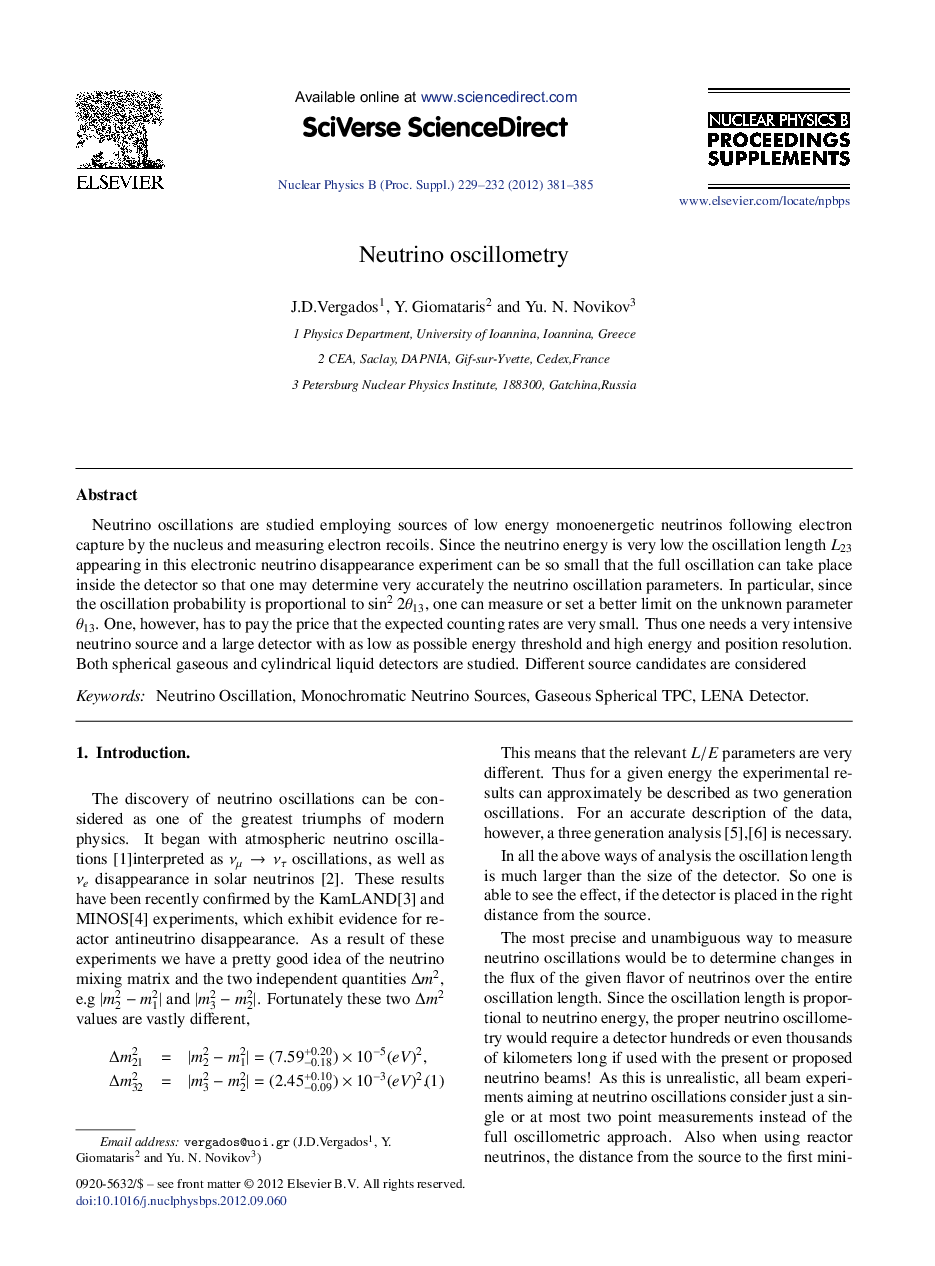| Article ID | Journal | Published Year | Pages | File Type |
|---|---|---|---|---|
| 1848870 | Nuclear Physics B - Proceedings Supplements | 2012 | 5 Pages |
Neutrino oscillations are studied employing sources of low energy monoenergetic neutrinos following electron capture by the nucleus and measuring electron recoils. Since the neutrino energy is very low the oscillation length L23 appearing in this electronic neutrino disappearance experiment can be so small that the full oscillation can take place inside the detector so that one may determine very accurately the neutrino oscillation parameters. In particular, since the oscillation probability is proportional to , one can measure or set a better limit on the unknown parameter θ13. One, however, has to pay the price that the expected counting rates are very small. Thus one needs a very intensive neutrino source and a large detector with as low as possible energy threshold and high energy and position resolution. Both spherical gaseous and cylindrical liquid detectors are studied. Different source candidates are considered.
